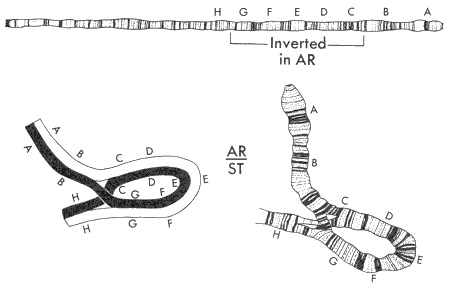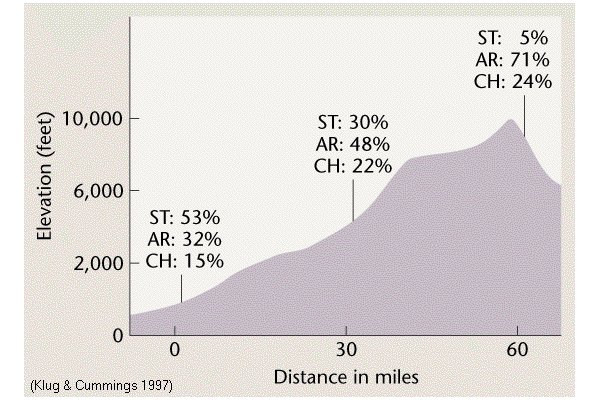
Natural Selection on Chromosome inversions in Drosophila pseudoobscura

Natural Selection on Chromosome inversions in Drosophila pseudoobscura
Banding patterns
are recognizable in preparations made from the giant salivary
gland chromosomes of flies (Diptera), such as the many species
of common fruit fly, Drosophila. In D.
pseudoobscura of southwestern North America,
banding patterns in Chromosome III vary by physical
rearrangements (inversions) of portions of the
chromosomes. The Arrowhead (AR) pattern differs
from the Standard (ST) arrangement
by a paracentric inversion involving about a
third of the chromosome. Other chromosome polymorphisms such as
Chiracahua (CH) involve multiple inversions, and
inversions-within-inversions. The different patterns can be
aligned by comparing banding patterns, and these relationships
were the first detailed genetic evidence of natural selection in
natural populations.
Th Dobzhansky
and co-workers demonstrated that particular inversion types
replaced others on reproducible geographic and altitudinal
gradients. The graph below shows that ST is most common
at sea level, and is replaced by AR at high altitudes.
The patterns are repeated throughout the range of the species.
Seasonal patterns repeat annually. Temperature adaptation was
demonstrable in the laboratory.
